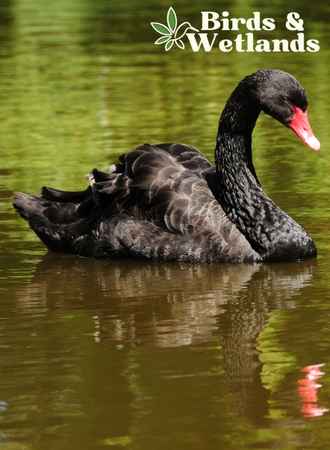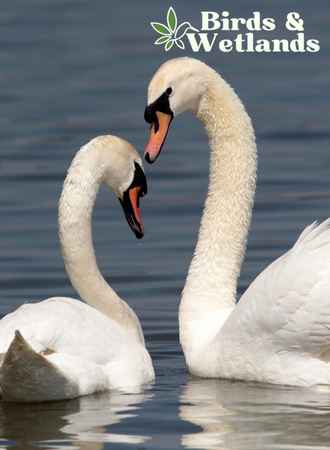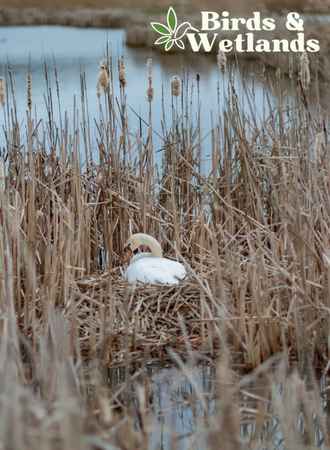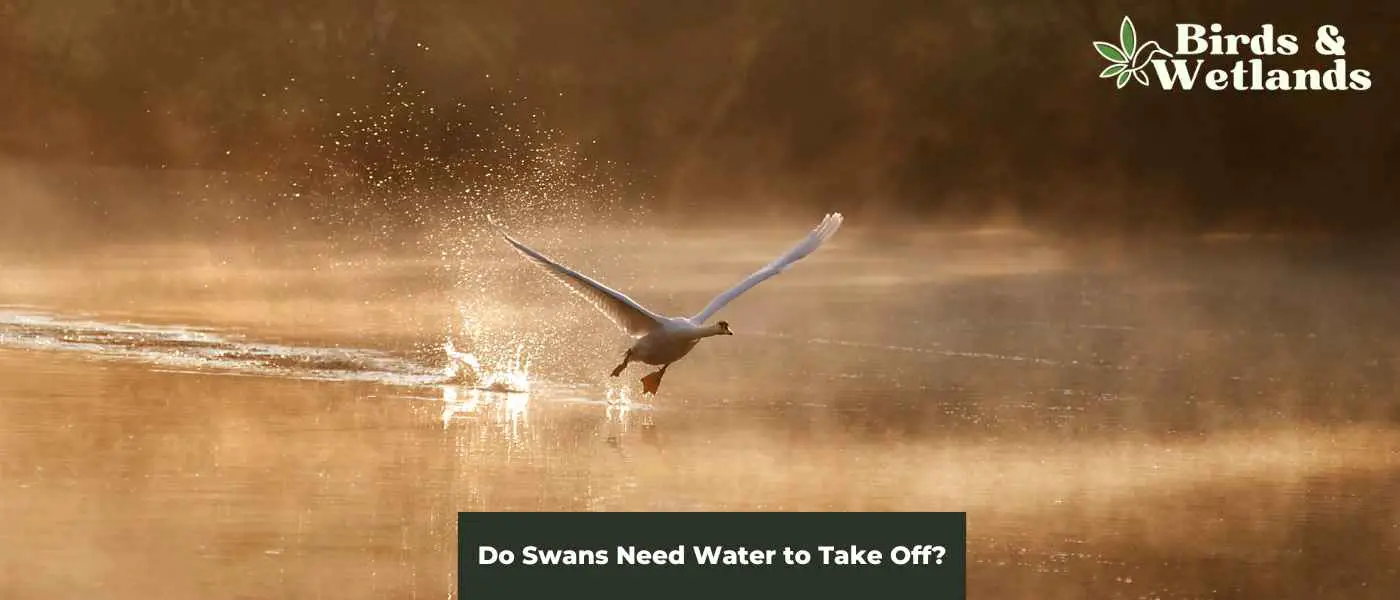Swans are among the largest flying birds in the animal kingdom. These waterfowl are known for their majestic flights and are often described as the “planes” of the avian world. But do they need water to take off?
Swans don’t need water to take off, although they prefer to become airborne from water. The large wingspan of swans requires them to build up speed before lifting off, which is easier to accomplish in a body of water. On land, swans will create quick bursts of flapping before taking off for longer flights.
Key Takeaways on Swans
- Swans can take off from both water and land, but they prefer to take off from water because it’s easier for them to gain enough speed.
- To take off, swans start by running on the water’s surface and flapping their wings rapidly. Their large wings give them the lift they need to fly.
- Swans can take off from land but they need more space to gain enough speed and avoid obstacles like buildings and trees.
How does a swan take off?
Swans taking off is an incredible sight to behold. The sheer power of a swan’s wing and grace as it glides through the air make it a sight to marvel at.
To take off, swans must first gather momentum. It begins with running on the water’s surface, their necks outstretched, and their wings rapidly flapping.
Though small, these powerful wings can propel them into the air. The average swan species have an average wing span of 6 to 7 feet wide and 3 to 4 feet long. Their enormous wingspan gives them incredible lift once they reach full speed. Some swan species have even been clocked, going at speeds up to 31 mph in flight!

Can a swan take off from land?
Like most flying birds, swans can take off from land with enough force. To gain enough momentum, they require a distance of at least 30 yards. This allows them to reach the height necessary to clear environmental factors such as buildings and trees in their flight path.
Once airborne, they will need an additional 30 yards to maintain their course and continue flying. Otherwise, they risk crashing into walls or towers if the area is too small or confined.
In open skies, however, an experienced swan can easily take off from ground level and soar gracefully to its destination.
Swans crash land in a variety of areas, not just on highways, and this is primarily due to turbulence.
Related Questions & FAQs on Swans
Do swans moult?
Every late spring or early summer, swans undergo a process called “molting,” where they lose their flight feathers and grow new ones. During this process, many swans may become flightless for up to six weeks as the flight feathers are slowly replaced with new ones.
The molting process usually starts with the swans losing a few feathers from the tail and wings, followed by larger groups of feathers over time. The molting process is why you may sometimes find swans looking a bit bedraggled during this period, as they naturally replace their old feathers with fresh, healthy ones.
Many swans have even been known to grab some extra nutrition if food sources are available during the molting season, further helping them through this growth period.\
During molting, swans are vulnerable to predators such as snapping turtles, foxes, coyotes and bears.

When do juvenile swans leave their parents?
Cygnets typically become fully fledged or capable of flight at around 3 to 4 months of age. This process begins with the growth of feathers on their wings and continues as they develop the muscle strength and coordination necessary for flight.
The exact age at which a cygnet becomes fully fledged can vary depending on the species of swan and environmental factors such as food availability and weather conditions.
It’s important to note that while cygnets may be capable of flight, they may not necessarily fly long distances until they are older and have gained more experience. Additionally, they may still depend on their parents for food and protection until they are fully independent.
Juvenile swans leave their parents at around 6 to 8 months of age. Once they leave, they will either remain in the same area as their parents or migrate to a different location with warmer climates in the winter.
In the wild, young swans will leave their parents to find a mate and establish their own territory. This usually happens at around 2 to 3 years of age. Once they have found a mate, they typically stay together for life and raise their own cygnets.
What to feed swans instead of bread?
Bread is not a natural food for swans, and feeding it to them can lead to malnourishment and health problems. It lacks the nutrients that swans need to thrive and can cause obesity and digestive issues.
Additionally, feeding swans bread can also contribute to the growth of harmful algae in the bodies of water where they live.
When swans rely on bread as their main food source, they may stop foraging for their natural diet, which can negatively impact their overall health and well-being.
If you want to feed swans at your local park, there are better and healthier alternatives to bread.
Swans love to eat various leafy greens, such as lettuce, spinach, and watercress, as well as vegetables like carrots, celery, and peas. They can also eat fruits like apples and grapes, but it’s important to note that some of these foods should be offered in moderation as they are high in sugar.
Furthermore, when feeding swans vegetables and fruits, it’s important to ensure they are clean and not treated with pesticides or other chemicals. You must also cut them into small, bite-sized pieces to avoid choking hazards.

When do swans turn white?
Swans along with geese and ducks are members of the family Anatidae. White swans are a group of species that include the mute swan, the trumpeter swan, the whooper swan, tundra swan. These birds are known for their distinctive white plumage and long necks.
The black-necked swan has a white body but a black neck and head, while the Australian black swan has entirely black plumage.
When young white swan cygnets hatch, they are typically covered in gray or brown down feathers. As they grow, they will begin to develop their adult plumage, which is white. The process of turning white can vary among species and individual birds, but generally, it takes several months for a cygnet to gain its adult plumage.
In the case of the mute swan (Cygnus olor), which is the national bird of Denmark, cygnets typically begin to develop their adult plumage around three to four months of age. The feathers on their wings and back will turn white, while their head and neck will remain gray or brown. By six months of age, most mute swan cygnets will have fully developed their adult plumage and will be completely white.
It’s worth noting that some swans may retain some of their immature plumage into their first year, and some swans may have yellow or black coloration on their bills, this is common and not unusual.
Are Australian black swans born with black plumage?
Young Australian black swans are covered in soft gray-brown down feathers for the first three to four weeks before their adult black feathers begin to appear.

How many eggs do female swans lay?
The number of eggs an adult female swan lays in a breeding season varies from one species to another. In most swans, females lay between 3 and 9 eggs per clutch.
Do swans mate for life?
Most species of swans, including mute swans, whooper swans and trumpeter swans, form monogamous pairs. Breeding pairs stay together until one pair member dies, while the surviving pair finds a new mate.
Other swans may only stay together for the duration of one breeding season and will find a different mate the following year. In some occasions, a pair of swans may break up if one of them can’t produce offspring. This particular behavior is uncommon within swans but it happens.

What do mute swans eat in the wild?
Mute swans are mostly herbivores, so the bulk of their diet consists of aquatic and terrestrial plants like grasses, sedges, pondweeds, water lilies, and small fruits. They frequently uproot aquatic plants to gain access to roots and tubers beneath the surface.
Mute swans supplement their diet with good protein sources such as insects, mollusks, worms, small fish, frogs and aquatic invertebrates.
Occasionally, mute swans graze on agricultural fields with other species to feed on waste grain, wheat, cracked corn and millet.
Do giant swans exist?
No, the giant swan (Cygnus falconeri) existed during the Middle-Pleistocene epoch. It measured about 190 to 210 cm (75 to 83 in) from bill to tail. It weighed about 16 kgs (35 lbs) with a wingspan of about 3 m (9.8 ft).
What is a male swan called?
A male swan is called a cob.
Where can you find a swan’s nest?
Swans usually build their nests along the edge of a lake, river, stream, or pond but have also been known to nest on rafts floating in open water. They prefer wetland habitats with plenty of aquatic vegetation, including reeds, cattails and rushes.
If swans feel safe, there is no reason they won’t nest on the ground near water as well. Once they make the area their own, they will rebuild their nest every year, sometimes returning to the same pond or lake for up to ten years. As long as the nesting spot is quiet and undisturbed by animal or human activity, swans may continue to return year after year.
Some swans such as the mute swan, may stay year-round within their nesting range.


